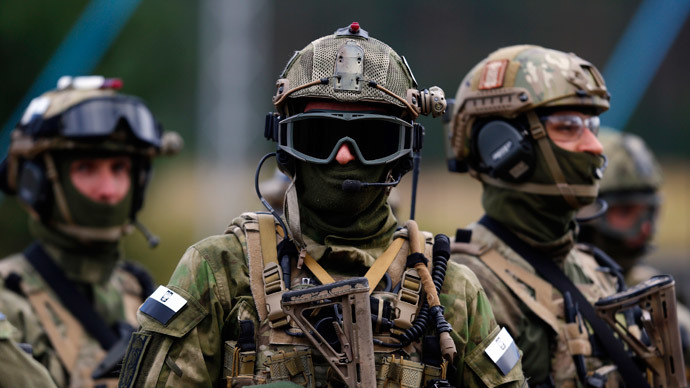NATO starts ‘very high readiness’ force drills in Poland

NATO’s newly formed rapid response force; designed to strengthen the “defensive” alliance’s eastern borders against the perceived Russian threat, has launched its first full deployment military drills in Poland.
“This is the first full deployment of the new force,” NATO spokesman, Polish Colonel Marek Pietrzak, told AFP.
The Noble Jump 2 exercises at the Zagan training range in the north west of Poland will last until June 19. It is featuring some 2,100 soldiers from nine NATO states. The servicemen form the Very High Readiness Joint Task Force (VJTF), created last year at the NATO Summit in the UK, is in response to a perceived Russian threat.
“It is our unconditional priority to have NATO’s eastern flank strengthened,” Polish Deputy Foreign Minister Henryka Moscicka-Dendys said.
READ MORE: 49 NATO vessels, 5,600 troops gear up for major US-led drills in Baltics
The Noble Jump exercises of the so-called “spearhead force” is the first time that high-readiness units are being deployed under the new VJTF framework. It is designed to allow the NATO command to identify shortfalls and to eventually refine tactics and implement the VJTF into the framework of the NATO Response Force.
The VJTF will be made up of approximately 5,000 troops and is expected to be operational by 2016. It is designed to be able to be on the move within two to three days, while the elite task force will be supported by air, maritime and special forces units.
The first training program of the VJTF force took place in April in the Czech Republic and the Netherlands. More drills are planned throughout the year, with NATO planning to continue the exercises in Italy, Portugal and Spain in October and November.
The new manoeuvers are part of a wider series of drills known as Allied Shield, in which some 15,000 troops from 19 allied states and three partner nations are taking part. In the meantime, Around 50 vessels from 17 countries, involving overall 5,600 troops, will be involved in the US-led exercise BALTOPS in the Baltic Sea that will last until June 20.
Since Crimea’s reunion with Russia and the start of the conflict in eastern Ukraine last spring, NATO forces have stepped up military exercises along the Russian border – in the Baltic States and Eastern Europe.
Last week, the Russian President Vladimir Putin once again reiterated that Russia is not an aggressor and is not building up its offensive military capabilities overseas, but only responding to security threats caused by US and NATO military expansion on its borders.
READ MORE: ‘Russia would attack NATO only in mad person’s dream’ – Putin
“I think that only an insane person and only in a dream can imagine that Russia would suddenly attack NATO. I think some countries are simply taking advantage of people’s fears with regards to Russia,” Vladimir Putin told the Italian newspaper Il Corriere della Sera. “They just want to play the role of front-line countries that should receive some supplementary military, economic, financial or some other aid.”
While acknowledging that Moscow must be given assurances that NATO’s further expansion into Ukraine is an unrealistic scenario, the Italian FM told the paper in a follow-up interview that the build-up of NATO’s “defensive mechanism” should not be viewed as a threat.
“I believe that Russia needs reassuring on one point, and that is that Ukraine’s entry into NATO is not a realistic possibility,” Italian Foreign Minister Paolo Gentiloni said. “But that NATO will defend its borders is in the organisation’s nature.”












